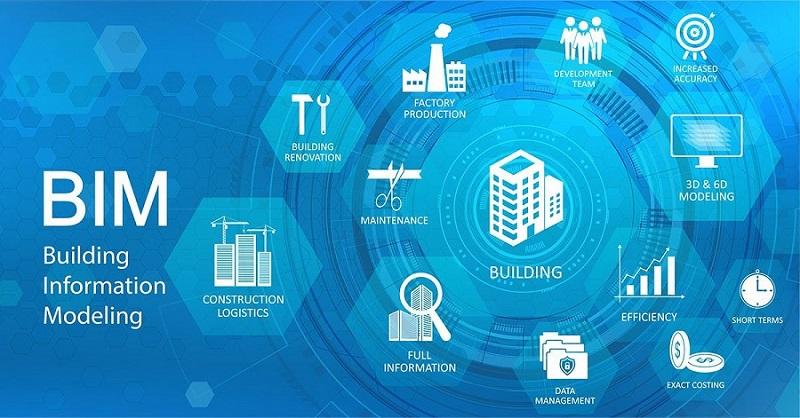BIM Software Market Overview:
The Building Information Modeling (BIM) software market has witnessed significant growth over the past few years, driven by the increasing demand for efficient project management and enhanced collaboration among stakeholders in the architecture, engineering, and construction (AEC) industries. BIM technology enables professionals to create digital representations of physical and functional characteristics of places, facilitating better decision-making throughout a project’s lifecycle. The global BIM Software Market was valued at approximately $11.1 billion in 2024 and is projected to grow at a compound annual growth rate (CAGR) of around 14.9% from 2024 to 2032. This growth can be attributed to the rising adoption of cloud-based solutions, advancements in technology such as artificial intelligence (AI) and machine learning (ML), and the growing emphasis on sustainable construction practices.
Market Key Players:
Several key players dominate the BIM software market, each contributing unique features and capabilities that cater to various segments within the AEC industry. Notable companies include Autodesk Inc., which offers Revit as one of its flagship products; Bentley Systems, known for its MicroStation software; Graphisoft with its ArchiCAD platform; Trimble Inc., which provides Tekla Structures; and Nemetschek Group, offering a suite of BIM tools under its Allplan brand. These companies are continuously innovating their offerings through research and development investments, strategic partnerships, and acquisitions to enhance their competitive edge. Additionally, emerging players are entering the market with specialized solutions tailored for niche applications within BIM.
Get a Sample Report + All Related Graphs & Charts:
https://www.marketresearchfuture.com/sample_request/8764
Market Segmentation:
The BIM software market can be segmented based on deployment type, application, end-user industry, and region. In terms of deployment type, it is categorized into on-premises and cloud-based solutions. Cloud-based BIM solutions have gained popularity due to their scalability, accessibility, and cost-effectiveness. The application segment includes design visualization, construction management, facility management, and others. The end-user industry encompasses residential construction, commercial construction, industrial construction, and infrastructure development. Geographically, the market is divided into North America, Europe, Asia-Pacific (APAC), Latin America (LATAM), and the Middle East & Africa (MEA). Each segment presents unique challenges and opportunities that influence overall market dynamics.
Market Opportunities:
The BIM software market presents numerous growth opportunities driven by several factors. One significant opportunity lies in the increasing government initiatives promoting smart city projects worldwide. Governments are investing heavily in infrastructure development that requires advanced planning tools like BIM for effective execution. Furthermore, as sustainability becomes a priority across industries globally, there is a growing need for energy-efficient building designs facilitated by BIM technologies. The integration of AI and ML into BIM processes also opens new avenues for predictive analytics in project management—enabling stakeholders to anticipate issues before they arise effectively. Additionally, training programs aimed at upskilling professionals in using BIM tools will further drive adoption rates across various sectors.
Regional Analysis:
Regionally speaking, North America holds a substantial share of the global BIM software market due to early adoption trends among major construction firms coupled with robust technological infrastructure supporting innovation efforts within this space. The United States leads this region’s growth trajectory owing to high investments in infrastructure projects alongside stringent regulations mandating digital modeling practices during project execution phases. Europe follows closely behind North America as countries like Germany and the UK emphasize digitization initiatives across their respective AEC sectors while fostering collaborative environments through integrated platforms powered by advanced technologies such as IoT (Internet of Things). Meanwhile, Asia-Pacific is expected to witness rapid expansion fueled by urbanization trends driving demand for modernized building practices alongside increased foreign investments targeting infrastructural developments across emerging economies like India and China.
Industry Updates:
Recent updates within the BIM software industry highlight ongoing advancements aimed at enhancing user experience while streamlining workflows associated with complex projects requiring multidisciplinary collaboration efforts among diverse teams involved throughout various stages—from conceptual design through construction completion phases down until facility management post-occupancy periods thereafter! For instance; Autodesk recently announced enhancements made available via its cloud-based platform enabling real-time collaboration between architects engineers contractors allowing seamless data sharing amongst all parties involved ensuring transparency accountability reducing potential delays arising from miscommunication errors often encountered during traditional methods employed previously! Moreover; Bentley Systems unveiled new features integrated into its OpenBuildings Designer toolset designed specifically targeting sustainable building practices aligning perfectly with current trends emphasizing eco-friendly approaches towards architectural design implementation!
Browse In-depth Market Research Report:
https://www.marketresearchfuture.com/reports/bim-software-market-8764
** Also Check Trending Report of MRFR **

